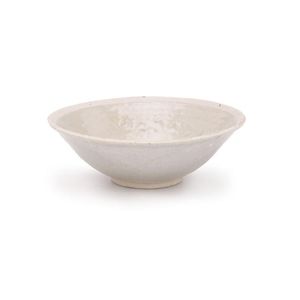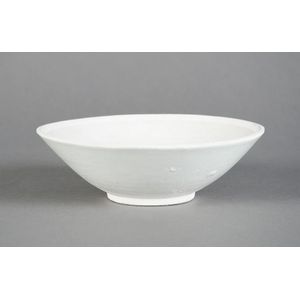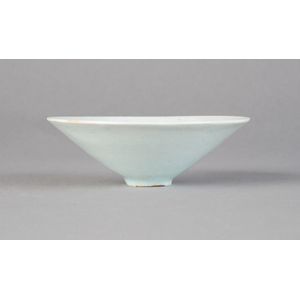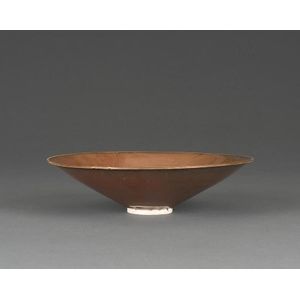Rare Dingyao Persimmon-Glazed Conical Tea Bowl, Northern Song Dynasty
You must be a subscriber, and be logged in to view price and dealer details.
Subscribe Now to view actual auction price for this item
When you subscribe, you have the option of setting the currency in which to display prices to $Au, $US, $NZ or Stg.
- Song Dynasty - The Song Dynasty was a ruling dynasty in China from 960 to 1279 AD. It was divided into two periods, the Northern Song (960?1127) and the Southern Song (1127?1279). The emperor was the ultimate authority, but he relied on officials who were selected based on their merit and skills rather than their family background or social status. The Song Dynasty was a period of great artistic and cultural achievements, particularly in the areas of poetry, painting, and calligraphy. The Chinese invented the printing press during this period, which revolutionized the spread of knowledge and ideas. During the Song Dynasty, China had a prosperous economy and was a centre of international trade, particularly in luxury goods such as silk, tea, and porcelain. The use of paper money became more widespread during this period, facilitating commerce and trade.
- Qing Dynasty - The Qing Dynasty was the last imperial dynasty of China, ruling from 1644 to 1912. It was established by the Manchu people, who originated from the northeastern region of China. The Qing Dynasty was preceded by the Ming Dynasty and followed by the Republic of China.
This item has been included into following indexes:
-
Chinese antiquities by dynasty
- Han Dynasty 200
- Northern Dynasties 115
- Qing Dynasty 32
- Song Dynasty 602
Visually similar items

A Chinese Ding Yao style porcelain bowl, decorated with moulded florals, the outside plain. Foot rim unglazed, a/f. Diameter 19 cm

A Chinese Qingbai bowl, Song Dynasty 960-1279, with greenish glaze and biscuit rim, 18.8 cm diameter. Provenance: Private NSW Southern Highlands collection

A Chinese Qingbai conical teabowl, Song Dynasty 960-1279, moulded in the centre with lotus heads within a stylised band, good greenish-blue glaze. 14.2 cm diameter. Provenance: Private NSW Southern Highlands collection

A Chinese copper-red glazed bowl, Qing dynasty, 19th century, covered in an even dark red glaze on the exterior, old labels attached to base. 6.8 cm high, 17.8 cm diameter. Provenance: Collection of Dr. Henry Cyril Adams
